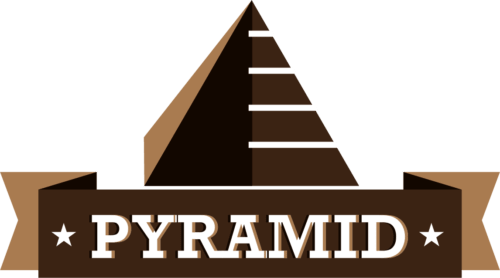
In the intricate dance of personal finance, the steps we take toward saving and borrowing often set the rhythm for our financial stability. At the heart of this dance lies a crucial but frequently misunderstood duo: emergency funds and credit. These two elements, each significant in its own right, perform a delicate balance that can dictate the health and resilience of our financial lives. This article isn’t just about understanding the mechanics of savings or the nuances of debt; it’s about unraveling the symbiotic relationship between these two and discovering how, when harmonized, they can lead to a more secure and confident financial future. From the calming reassurance of a well-stocked emergency fund to the strategic use of credit as a financial tool, we’ll explore how to navigate these waters with wisdom and foresight.
Understanding Emergency Funds
An emergency fund is more than a financial buffer; it’s a peace-of-mind reserve set aside to tackle unforeseen expenses such as medical emergencies, sudden job loss, or unexpected home repairs. The rule of thumb is to have enough to cover three to six months of living expenses. But why this specific range? Those with less stable employment might aim for six months, while others with more predictable income could opt for three. Having this fund alleviates stress and uncertainty, providing psychological comfort alongside financial security.
Building a Robust Emergency Fund
Building this fund isn’t an overnight task; it’s a gradual process. Here are some practical steps to get started:
- Set Clear Goals: Determine how much you need based on your monthly expenses, multiplied by the number of months you want to cover.
- Find Your Saving Pace: Assess your income and expenses to find a comfortable saving amount. Remember, any amount saved is a positive step.
- Use Windfalls Wisely: Tax returns, bonuses, or any unexpected income can give your emergency fund a significant boost.
- Automate Savings: Consider setting up automatic transfers to your savings account to maintain consistency and ease.
Consider Emily, a freelance graphic designer. When a client unexpectedly ended a contract, Emily’s emergency fund covered her living expenses for four months. This financial cushion not only saved her from immediate financial ruin but also provided emotional relief, allowing her to focus on finding new clients without the stress of financial instability.
– Past Client of Pyramid Credit Repair
Understanding Credit and Loans
Credit, when used wisely, is a tool that can offer convenience, rewards, and financial flexibility. It’s essential to understand how credit scores are impacted by different types of credit usage. Managing credit can be complex, but with knowledge and discipline, it can be mastered. Loans, on the other hand, are often necessary for larger investments like education or a home. However, the misuse of credit and loans can lead to a cycle of debt, where high-interest rates and monthly payments become a financial burden.
Types of Credit and Their Uses
- Credit Cards: Ideal for short-term borrowing and everyday purchases. Be cautious, as balances not paid in full can become a trap.
- Personal Loans: Useful for consolidating debt or funding large purchases. Requires discipline in repayment.
- Mortgages: Essential for homebuyers but come with long-term commitment and financial implications.
In each case, understanding interest rates and how they affect the overall cost is crucial. It’s important to balance the benefits of each credit type with its risks.
The Interplay Between Emergency Funds and Credit/Loans
An emergency fund can significantly lessen the need for credit in emergencies. It acts as a cushion, preventing the need for high-interest loans or credit card debt. A well-funded emergency account demonstrates to lenders that you’re a responsible borrower, potentially leading to better loan terms and interest rates. Have you considered how an emergency fund can be your first defense against credit card debt?
Balancing Emergency Funds and Debt Repayment
- The Snowball Method: Start by paying off smaller debts first while making minimum payments on larger debts. This method can create momentum and a sense of achievement.
- The Avalanche Method: Focus on debts with the highest interest rates first, while maintaining minimum payments on others. This approach saves money on interest over time.
- Combining Strategies: Some may find a hybrid approach more suitable, paying off some smaller debts for psychological wins while tackling high-interest debts simultaneously.
Consider Jack and Lisa, a couple who balanced building their emergency fund while paying off student loans. They opted for the avalanche method, targeting high-interest loans first while setting aside a small percentage of their income toward their emergency fund. This approach not only reduced their interest burden but also built a safety net, demonstrating their resilience and strategic financial planning.
– Emergency Fund: A Case Study
Advanced Tools and Resources
Leveraging technology can simplify managing your finances. Budgeting apps like You Need A Budget (YNAB) and tools like Mint, provide a clear overview of income, expenses, and savings progress. For those not tech-savvy, traditional budgeting methods or community-based financial advice workshops can be equally effective. Additionally, online financial forums and communities offer support and advice, making the journey towards financial stability less daunting.
The Bottom Line
The synergy between maintaining an emergency fund and managing credit and loans is a cornerstone of sound financial planning. By understanding their interplay and applying strategic financial management, individuals can safeguard against unforeseen financial emergencies while maintaining good credit health. Armed with this knowledge, you are well on your way to a more secure and confident financial future.

 How to Remove Hard Inquiries from Your Credit Report in 15 MinutesOctober 10, 2023
How to Remove Hard Inquiries from Your Credit Report in 15 MinutesOctober 10, 2023 How to Handle Credit Collection Services (CCS) on Your Credit ReportOctober 24, 2023
How to Handle Credit Collection Services (CCS) on Your Credit ReportOctober 24, 2023 How to Handle Transworld Systems (TSI) on Your Credit ReportDecember 6, 2023
How to Handle Transworld Systems (TSI) on Your Credit ReportDecember 6, 2023 How to Cancel Your Credit One Card: A Step-by-Step GuideNovember 28, 2023
How to Cancel Your Credit One Card: A Step-by-Step GuideNovember 28, 2023 How to Get Rid of Ability Recovery Services on Credit ReportDecember 14, 2023
How to Get Rid of Ability Recovery Services on Credit ReportDecember 14, 2023










